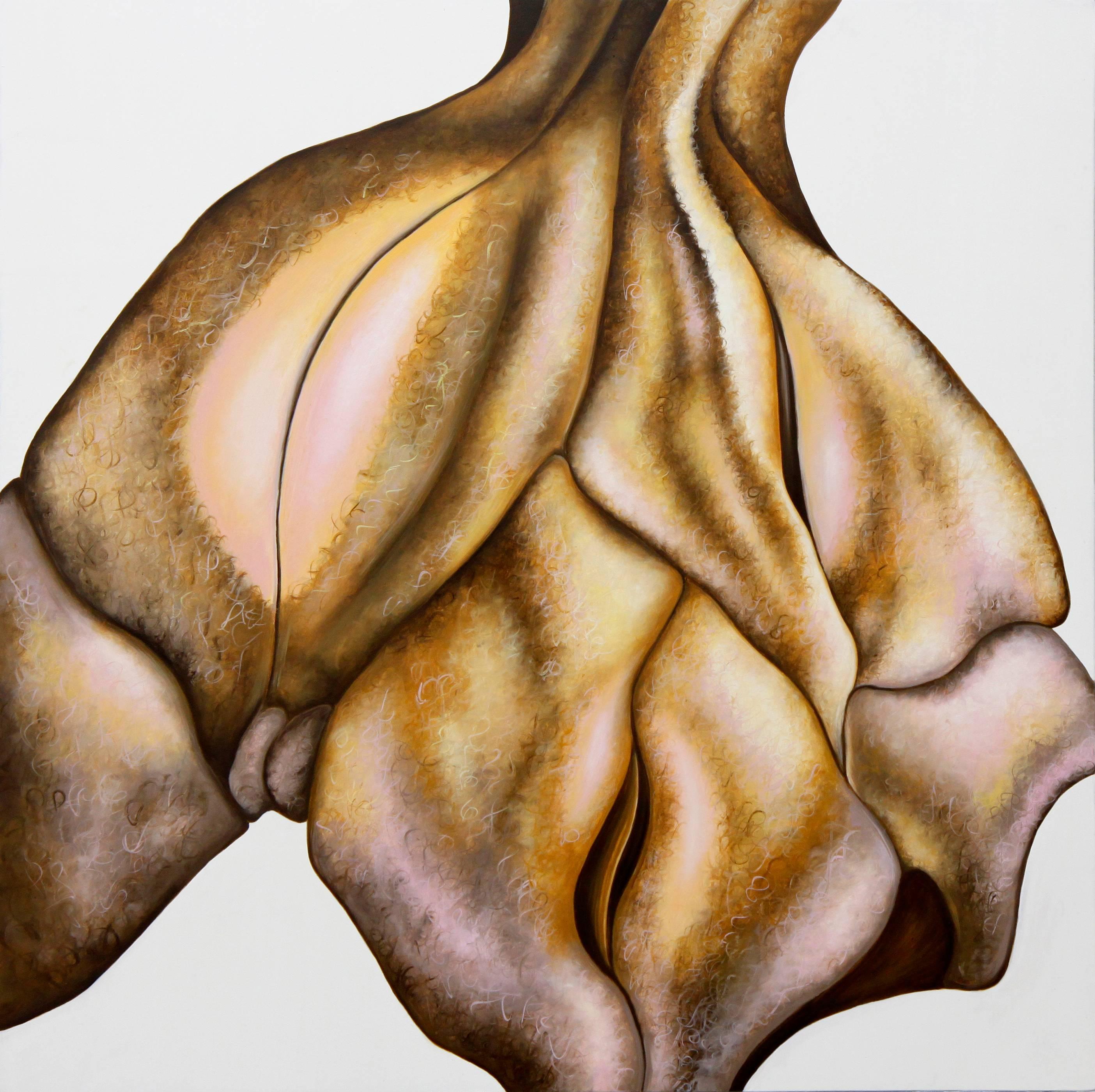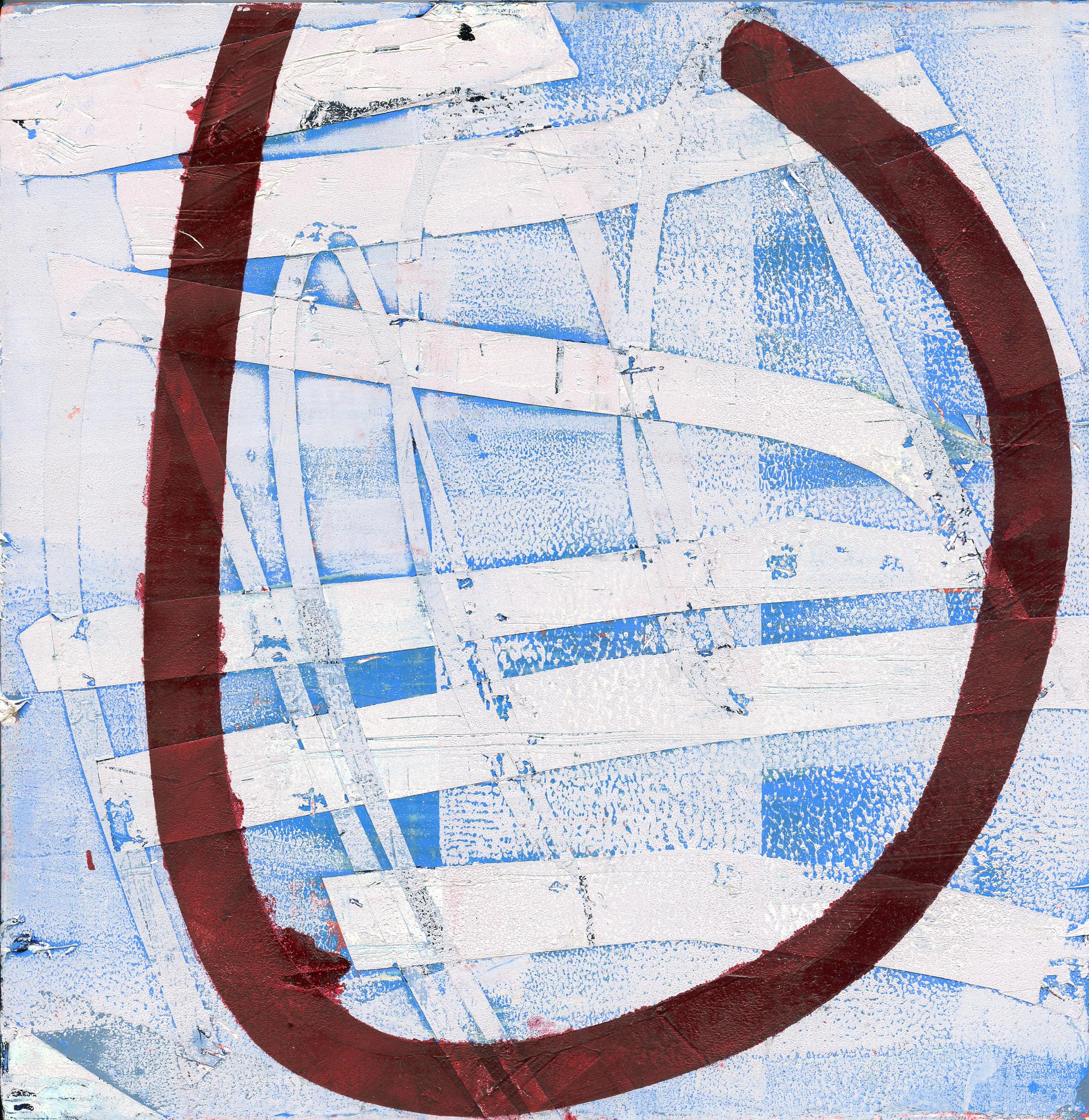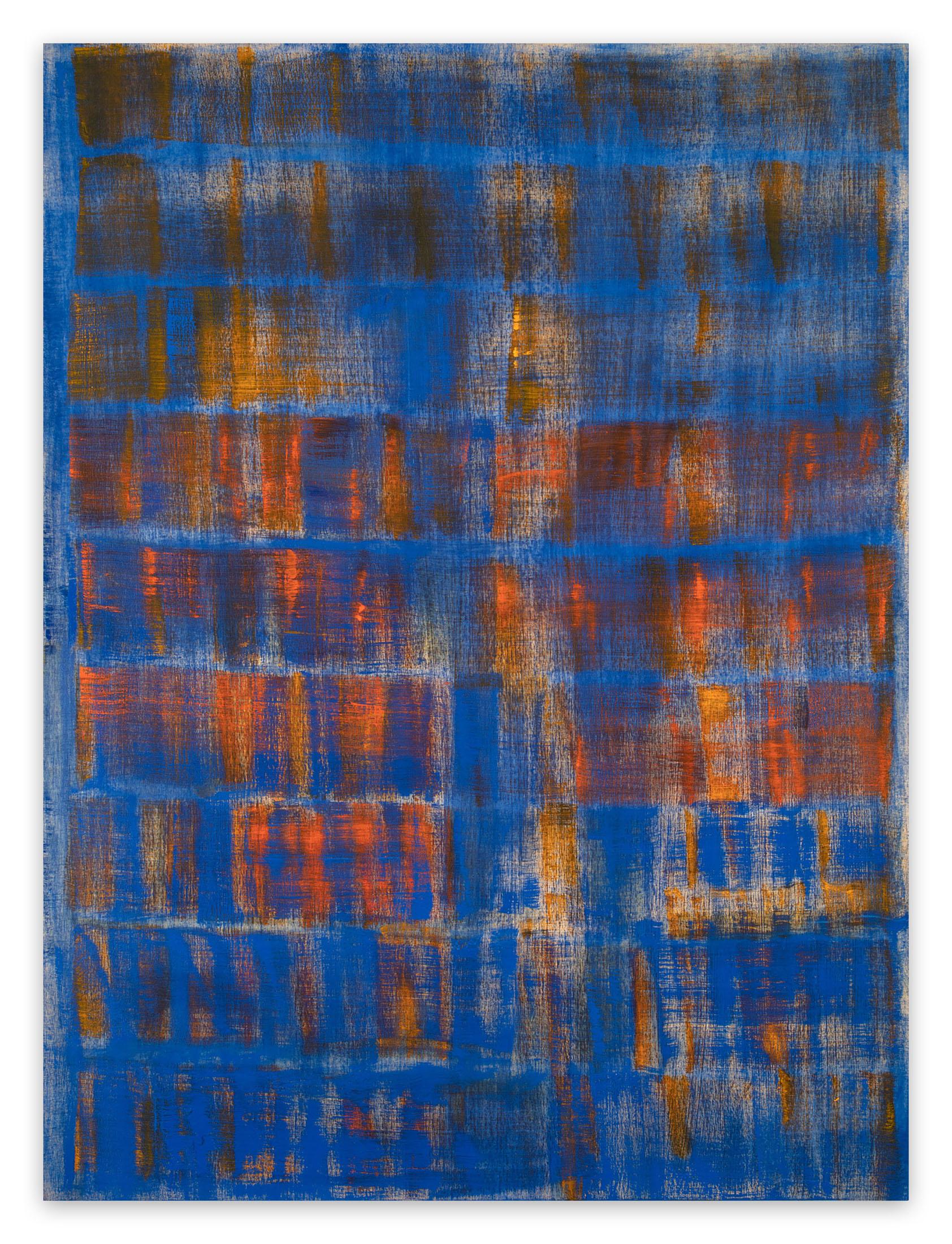Items Similar to Komposition 3
Want more images or videos?
Request additional images or videos from the seller
1 of 5
Franz EckerKomposition 3
About the Item
Seit seinem frühen Tod 1999 erlebt das Werk von Franz Ecker eine längst fällige Neubewertung, die sich auch in zahlreichen Einzelausstellungen, Katalogen und einem sehenswerten Kinofilm manifestiert. Der extrem produktive Maler hinterließ ein fast unüberschaubares Oeuvre mit einer extremen stilistischen Breite und einer ganzen Reihe von Spitzenwerken, die ihresgleichen in der jüngeren österreichischen Kunstgeschichte suchen und deren Stellenwert noch nicht hinreichend erfasst ist.
Als Franz Ecker 1966 nach dem Studium bei Sergius Pauser mit zwei Staatspreisen nach Leonding zurückkehrt, hat er bereits eine klare abstrakte Formensprache ausformuliert. Als
Inspirationsquelle sind Czeanne und Picasso zu nennen, als Lehrer unbedingt aber auch Martin Polasek. Sie führen zu einer flächenbetonten abstrakten Malerei, die durch exakte farbliche Abstimmung und strenge Komposition eine räumliche Erfahrung auslöst. Ihre stärksten Momente erlebt Franz Eckers Malerei dabei an der Grenze zwischen Gegenständlichkeit und Abstraktion. Nur in der Zeit bis ca. 1975 gibt es dazu auch eine Vielzahl Aquarelle, wobei Ecker dieses Medium für besonders lyrische Arbeiten nutzt.
Wenn Franz Ecker dennoch nicht zum Kanon der Avantgarde der 70er-Jahre gerechnet wird, so deshalb, weil er sich dem Kunstmarkt bis zur Selbstaufgabe verweigert hat. Statt die
Möglichkeiten zu nutzen, die ihm in Wien geboten werden, geht er nach der Akademiezeit wieder zurück nach Linz, das damals für sein Werk weder Verständnis noch Markt bietet. Vom etablierten Kunstbetrieb abgeschnitten, lebt Ecker kompromisslos das prekäre Leben eines einsamen Genies. Ein Künstler-Mythos, der in seinem Fall freilich bittere Realität ist.
Davon unbeeindruckt, erarbeitet sich Ecker eine immer breitere Formensprache innerhalb der klaren Linie der abstrakten Bildauffassung, was er auch mit ständig neuen Signaturformen unterstreicht.
Ende der siebziger Jahre werden seine Arbeiten gestischer und expressiver. Werke wie etwa Eckers „Kafka“ nehmen die „Neuen Wilden“ vorweg. Als diese einige Jahre später als “Rückkehr der Malerei“ gefeiert werden, bemerkt Franz Ecker voller Selbstbewusstsein in einem Interview, dass er hier nicht viel Neues erkennen könne. Er sei wohl immer noch „ein Einäugiger unter Blinden“.
Franz Ecker hat zu diesem Zeitpunkt seinen Stil bereits zu einer stark strukturierten Flächigkeit weiterentwickelt, die öfters mit Keith Haring verglichen wird. Für Museen, Kuratoren, Kunsthistoriker und Sammler hinterlässt Ecker ein Werk, das noch alle Möglichkeit der Deutung, Neubewertung, ja der Entdeckung zulässt.
- Creator:Franz Ecker (1943 - 1999)
- Dimensions:Height: 33.86 in (86 cm)Width: 33.86 in (86 cm)
- Medium:
- Movement & Style:
- Period:
- Condition:
- Gallery Location:Wien, AT
- Reference Number:1stDibs: LU1782212691192
About the Seller
No Reviews Yet
Vetted Seller
These experienced sellers undergo a comprehensive evaluation by our team of in-house experts.
Established in 1973
1stDibs seller since 2022
5 sales on 1stDibs
- ShippingRetrieving quote...Ships From: Wien, Austria
- Return PolicyA return for this item may be initiated within 7 days of delivery.
More From This SellerView All
- NudeLocated in Wien, 9Seit seinem frühen Tod 1999 erlebt das Werk von Franz Ecker eine längst fällige Neubewertung, die sich auch in zahlreichen Einzelausstellungen, Katalogen und einem sehenswerten Kinof...Category
Late 20th Century Abstract Abstract Paintings
MaterialsOil, Wood Panel
- Ohne TitelLocated in Wien, 9Seit seinem frühen Tod 1999 erlebt das Werk von Franz Ecker eine längst fällige Neubewertung, die sich auch in zahlreichen Einzelausstellungen, Katalogen und einem sehenswerten Kinof...Category
Late 20th Century Abstract Abstract Paintings
MaterialsOil, Wood Panel
- Mann und FrauLocated in Wien, 9Seit seinem frühen Tod 1999 erlebt das Werk von Franz Ecker eine längst fällige Neubewertung, die sich auch in zahlreichen Einzelausstellungen, Katalogen und einem sehenswerten Kinof...Category
Late 20th Century Abstract Abstract Paintings
MaterialsOil, Wood Panel
- Wooden HeadsLocated in Wien, 9Since Franz Ecker’s early death in 1999 his work has been newly appreciated, what is manifested in numerous exhibitions, catalogues and in the acclaimed film about the artist. He was extremely productive and left behind an almost unmanageable scope of works in various styles. Among them some of the top works that are unparalleled in recent Austrian art history and whose significance has not yet been adequately appreciated. After finishing his studies in 1966 in class of prof. Sergius Pauser and after receiving his two prizes, Franz Ecker moved back to Leonding where he developed his clear, abstract language of forms. Among his sources of inspiration are Cezanne and Picasso, as well as Martin Polasek who was one of his teachers. This led him to painting in a flat and abstract manner, which triggers a spatial experience through its exact color coordination and strict composition. The strongest period in his oeuvre is the time when his paintings are between figuration and abstraction. Only until around 1975 he additionally creates numerous watercolors, even though he restricts this medium to his more lyrical works. If Franz Ecker cannot be included in the avant-garde cannon of the 70’s, it is only because he witheld from presenting his works on the art market. Instead of using the opportunities that were offered to him in Vienna, he returned after his time at the academy to Linz where there was no appreciation nor market for his works. Distanced from the established art business, Ecker lives uncompromisingly the precarious life of a lonely genius. An artist myth, which in his case certainly is a bitter reality. Unimpressed by this, Ecker develops an increasingly broad language of forms within the clear line of abstract pictorial conception, which he emphasizes with constantly new forms of signature. At the end of the seventies his works became more gestural and expressive. His works like “Kafka” anticipate the “Neue Wilden”. When these are celebrated as the “return of painting...Category
Late 20th Century Abstract Abstract Paintings
MaterialsPaint, Oil, Panel, Wood Panel
- PabhobecneLocated in Wien, 9The avant-garde artist Vladimir Sterligov created his own system of forms and symbols here. These, as well as his other constructions, deal with non-representational reality. The two...Category
1920s Modern Abstract Paintings
MaterialsOil, Wood Panel
- Die Benno Kirche - Benno ChurchBy Fritz BaumgartnerLocated in Wien, 9The painter was born in Austrian, but grew up in Munich and died in 2006 at the age of 77. He was an outstanding personality, atypical in the German art landscape. He started on the ...Category
Early 2000s Expressionist Abstract Paintings
MaterialsAcrylic, Wood Panel
You May Also Like
- Original-Primary Blue-White Butterfly-Expression-UK Awarded Artist-CottageGardenLocated in London, GBPrimary Colour Series- White Butterfly ( It's just Another Stage of Life) is Shizico Yi's latest project, inspired by Japanese woodblock Print and the a nod to calligraphy tradition....Category
2010s Abstract Expressionist Abstract Paintings
MaterialsSilver
- Uniformly Coordinated Tectonic Preferences IVBy Kati VilimLocated in Jersey City, NJ"Uniformly Coordinated Tectonic Preferences IV," by Kati Vilim is a blue and magenta scale abstract geometric, non-objective, oil painting on canvas over wo...Category
2010s Abstract Geometric Abstract Paintings
MaterialsCanvas, Oil, Wood Panel
- Tributaries Abstract River Oil Cold Wax Original Bonnie Zahn Griffith PaintingLocated in Whitefish, MT"Tributaries" by Bonnie Zahn Griffith, Oil and Cold Wax Medium on Wood Panel, 18" x 18" unframed, 20" x 20" framed in a modern black frame with hanging wire included. Known for her plein air pastels, Bonnie also does some amazing abstract pieces like this one. Bonnie Zahn Griffith is an artist of the western landscape, working in oils and pastels. The rich pigments of pastel and oil allows her to create paintings that have the brilliance and the bold color we see in the landscapes of the western United States, giving her unlimited options to create. These mediums allow Griffith to bring depth and texture, light and mood into her paintings. "My goal is to create work that draw the viewer in to experience and imagine the time of day, the temperature, the sounds, the smells. I want the viewer to experience the work and get lost in it – if only for a moment. My love of the landscape prompts me to paint it. I look for a story to tell when I look at the sagebrush hills, the lush river lands, the wheat fields, the intense greens of spring in rich mountain valleys and the ever changing colors of the desert. My mediums allow me to tell that story with strong color and intensity." As a child of artist parents, Griffith grew up on a ranch near the Missouri Breaks in central Montana. They lived in a remote area and that allowed for a lot of self-directed entertainment - drawing, painting, reading, horseback riding and daily ranch chores. Griffith was a self-proclaimed artist at age 5, getting into her mother's paints and paper. Landscape shapes, texture and color were observed and studied. Famous artists like Russell, O’Keefe and Payne were favorite sources of reference. "I don't remember ever being "bored" because there was always something to do that interested me! Pretty much all of that stuck with me through a career in Radiology Sciences; showing work in galleries and exhibits during that time. In the mid 1990's my art became a full time endeavor." Bonnie Zahn Griffith has studied with instructors such as Robert Moore, Lorenzo Chavez, Ned Mueller and others in the quest to strengthen and develop her style of representational work. Griffith is a signature member and the Secretary for the Pastel Society of the West Coast, a signature member of and past President for the Northwest Pastel Society, member of the Landscape Artists International (juried membership), Plein Air Painters of Idaho and American Impressionist Society. She has served 7 years as the chair for the Meridian (ID) Arts Commission, has served as the Executive Director of WaterWorks Art Museum, Miles City, MT and curator for several galleries. Griffith also teaches workshops in plein air technique, pastel painting techniques (Studio and Plein Air) and multimedia art. She works out of her studio in southwestern Idaho and paints plein air throughout the Rocky Mountain region, the western US...Category
21st Century and Contemporary Abstract Expressionist Abstract Paintings
MaterialsGold Leaf
- Swollen Lips Small BallsBy Emily RozLocated in New York, NYoil on wood panel 21x21 Emily Roz (b. 1972, New Haven, CT) received an MFA in Fiber from Cranbrook Academy of Art and a BA from Hampshire College where she studied Art History, Lite...Category
2010s Abstract Figurative Paintings
MaterialsOil, Wood Panel
- Mary Didoardo "Deep Dive" - Small Abstract Oil Painting on Wood PanelBy Mary DidoardoLocated in New York, NYMary Didoardo Deep Dive, 2022 oil on wood panel 8 x 8 in. (dido093) This small abstract oil painting on wood by Mary Didoardo features he...Category
2010s Abstract Abstract Paintings
MaterialsOil, Wood Panel
- Fire and Ice (Abstract painting)By Emily BergerLocated in London, GBFire and Ice (Abstract painting) Oil on wood panel - Unframed. She layers paint in gestural, horizontal swaths from left to right, stacking the horizont...Category
2010s Abstract Abstract Paintings
MaterialsOil, Wood Panel




